DLTS Measuring Device
Semiconductor Analyzer DLTS System HERA FT1230
The DLTS method is an excellent technique to detect the electronic state (deep level) created by crystal defects with high sensitivity.
Since semiconductor materials are greatly affected by very small inherent impurities or lattice defects (crystal defects), defect evaluation is extremely important.In the DLTS method, by monitoring the dynamic process by which the carrier (e.g. electron) trapped in the deep level is emitted into the band (conduction band), through the transient changes in the junction capacitance of the sample, the parameters (energy levels, capture cross-section) and concentration value, spatial distribution etc. of the level can be known.
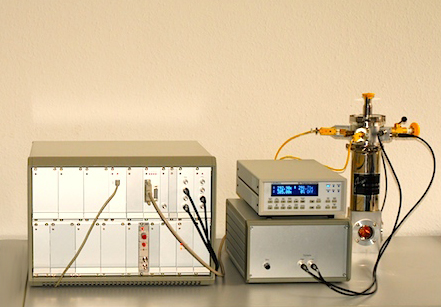
The Phystech (Germany) DLTS Measuring Device (FT1230 HERA-DLTS) sold by our company, in addition to being a highly sensitive measuring system essential in DLTS Measuring, is also a sophisticated measuring instrument equipped with software capable of dealing with defect evaluation for various semiconductor materials.
The FT1230, in addition to the basic DLTS measurement mode, has an ICTS (Isothermal Capacitance Transient Spectroscopy) mode for time domain measurement under fixed temperatures.As well, the FT1230 can meet the needs for optical DLTS / ICTS using optical pulses, CC mode (Constant Capacitance-DLTS), current mode DLTS / ICTS, and PITS (Photo-induced current Transient Spectroscopy) method, effective for measuring semi-insulating semiconductors and ultra-thin layers where the entire sample is depleted, and TSC method (Thermally Stimulated Current) etc.Current mode, and DLTS / ICTS measurement, are also applied to defect evaluation in three-terminal elements such as FET etc.
Manufacturer Profile

Phystech (Germany)
A specialized manufacturer of DLTS measuring devices from the University of Kassel, Germany.Currently, Phystech has succeeded in the development of the only digital system among all the DLTS systems available for sale, the world's most popular DLTS measurement system, The FT-1230 released in 2016, in comparison with competitive products, has the most diversified measurement modes, and is the only system capable of the scale necessary to meet requests from researchers to measure all kinds of materials.
Product Features
| HERA-DLTS | Standard DLTS measurement Digital DLTS measurement Laplace DLTS measurement Comprised of the above three modes |
|---|---|
| Possible measurements | C/V, I/V, C(t) Measurement C/V, I/V, Implemented characteristics Dopant concentration Barrier height Ideal coefficient of the Schottky diode Oxide-film thickness etc. calculations possible |
| DLTS Measurement Options | Fourier transform Laplace transform Multi-exponential transient fit ITS (Isothermal transient spectrum) signal deconvolution Tempscan signal deconvolution |
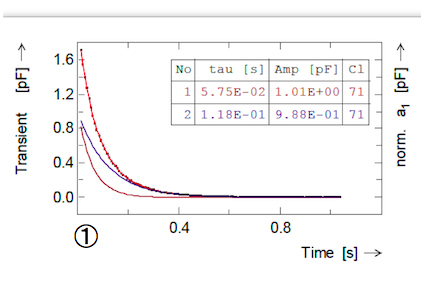
Transient data
- Measurement data
- Two time constants separated by Laplace transform
- Recalculated and compared with measurement data

ITS data (one temperature)
- Measurement data
- Separated by refolding
- Recalculated and compared with measurement data
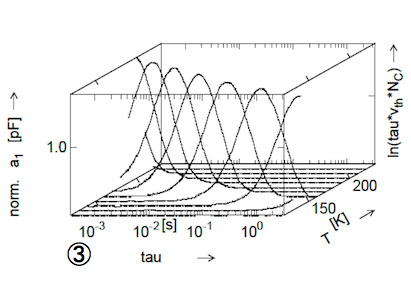
Measurement of ITS at several temperatures
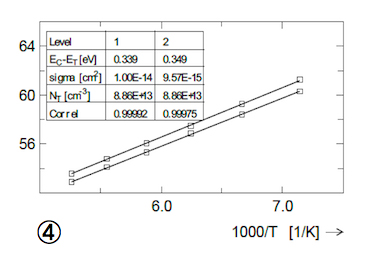
Data 2) and 3) Based on Arrhenius plot

【Plot 1】 "Period width scans" of different temperatures."Emission time constant" recalculated to "tau" X Axis (measurement signal)
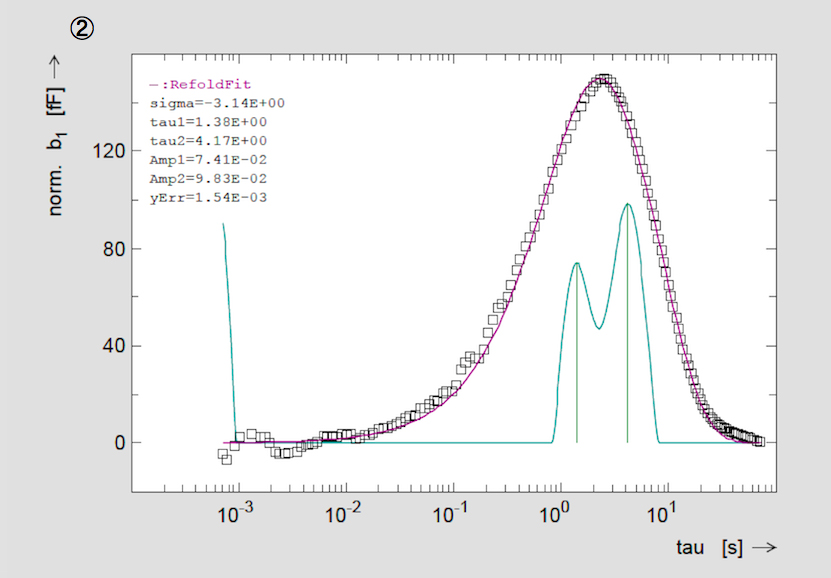
【Plot 2】 Scan of plot 1 (including deconvoluted curve and estimated time constant; vertical line)
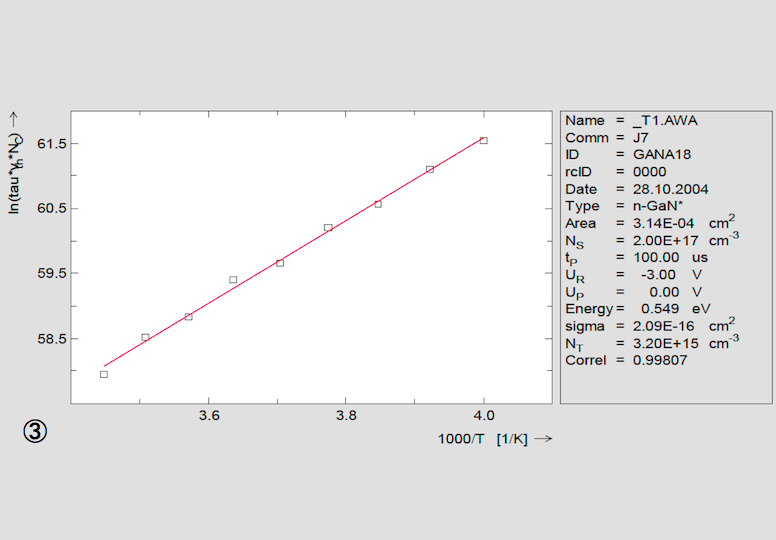
【Plot 3】 Arrhenius plot from data of Plot 1 without deconvolution option

【Plot 4】 Arrhenius plot using deconvolution data (Level 1, Level 2) displayed in Plot 2 Note the comparison of plot 3 without convolution data

Transient Deconvolution:
Multi-exponential transient fits (Provencher discrete, excellent results)
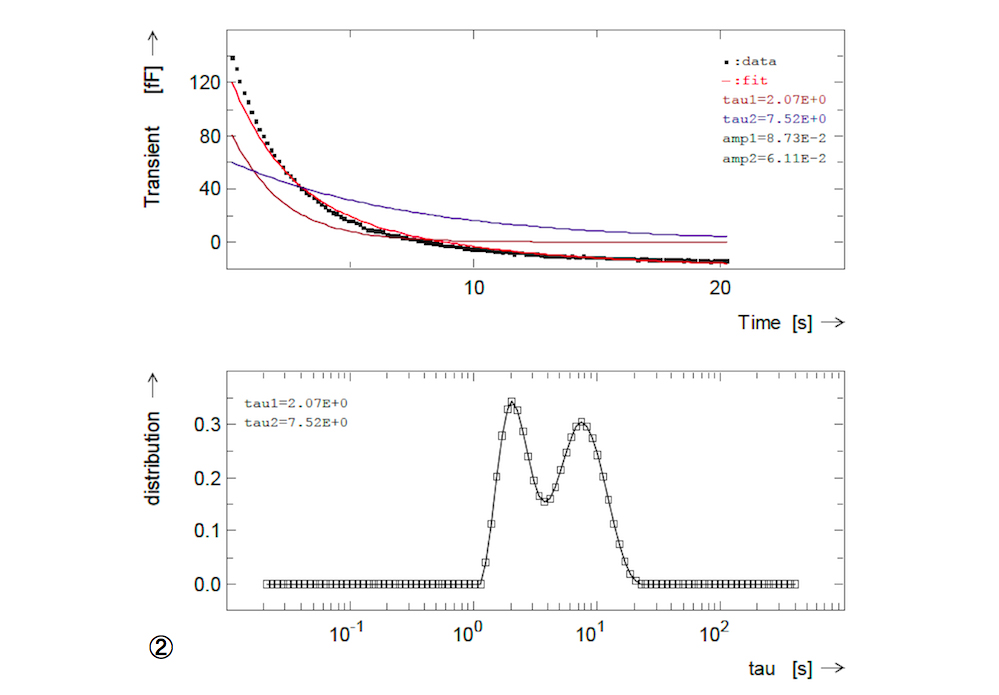
Laplace transform (Provencher contin, a poor result for this transient)
